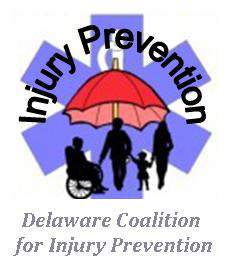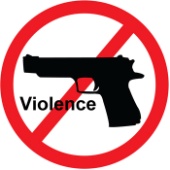
PREVENTION TEAMS:
Prevention of Individual and Family Violence Injuries Across the Lifespan Team
Everyone is entitled to relationships that are respectful, loving, and without fear.
The Center for Disease Control (CDC) describes interpersonal violence as "the intentional use of physical force or power, threatened or
actual, against another person or against a group or community that results in or has a high likelihood of resulting in injury, death,
psychological harm, mal-development, or deprivation" (Dahlberg and Krug 2002 as cited in CDC, 2013)
Broadening the Scope of Interpersonal Violence - What are some examples of interpersonal violence?
According to the CDC, all of the following are forms of interpersonal violence:
-
Bullying – This is an attack or intimidation with the intention to cause fear, distress, or harm, in person or
through technology (Source: CDC). Bullying can occur in homes, in schools, in work places, and in communities. Physical injuries, social and
emotional difficulties occur with bullying. There is a relationship between bullying and suicide-related behaviors (Source: CDC). See below-resources on bullying.
-
Child Abuse – Child maltreatment (abuse) includes neglect and/or physical, sexual, and emotional abuse. It
occurs via "any act or series of acts of commission or omission by a parent or other caregiver (such as a clergy, coach, or teacher)
that results in harm, potential for harm, or threat of harm to a child" (Source: CDC). Maltreatment "causes stress that
can disrupt early brain development".(Source: CDC) April is
National Child Abuse Prevention Month. See below-resources on child abuse.
-
Domestic Violence - Intimate partner violence describes physical, sexual, or psychological harm by a current or former
partner or spouse. Domestic violence destroys healthy relationships by the use of force, coercion, dominance, and fear. Domestic
violence/intimate partner violence includes physical abuse, psychological abuse, sexual abuse, financial exploitation, and "birth
control sabotage", a form of reproductive and sexual coercion. Domestic violence has no boundaries. It is blind to sexual
orientation, gender, age, socio-economic status, race, religion and education. Domestic Violence must be recognized for what it is: a
public health issue of epidemic proportions. In 2012, there were 15,103 reported domestic violence incidents in Delaware. (Source:
Delaware Criminal Justice Information System) October is Domestic Violence Awareness Month.
See below-resources on domestic violence.
-
Elder Abuse - Elder maltreatment (abuse) affects those seniors over 60 years of age. Forms of elder abuse include
physical, sexual, emotional, and financial abuse, as well as neglect and abandonment. (Source: CDC and CDC) June 15th is World Elder Abuse Awareness Day.
See below-resources on elder abuse.
-
Gun Violence - Firearm-related violence includes homicide and suicide. Both have risen substantially (Source: CDC). See the attached file for statistics and information
about gun violence, both nationally and in Delaware. Gun Violence Prevention
-
Mental / Emotional Violence - Psychological / emotional / mental violence includes acts, threats of acts, or coercive
tactics. These include withholding information, humiliation, or isolating the victim (Source: CDC). Bullying is psychological
violence. See below-resources on mental/emotional violence.
-
Physical Violence - This is described as occurring when a person hurts or tries to hurt another person by hitting,
kicking, or using other types of physical force. Physical violence is one of four types of intimate partner violence (the others are
sexual violence, threats of physical and sexual violence, and psychological / emotional violence) (Source: CDC). See below-resources on
physical violence.
-
Sexual Violence - An abusive sexual act, rape, or an attempted or completed sex act involving a person who is unable
to understand the nature or condition of the act are forms of sexual violence (Source: CDC). In 2012, there were 808 sexual assaults in Delaware
(Source: Delaware Criminal Justice Information System). Adults and children
are both impacted. To help prevent child sexual abuse, there is a CDC training program, Stewards of Children. It teaches adults to take
proactive steps to protect children from adults' sexual advances. A national program, it is offered in Delaware through the
collaboration of many partners. For more information on the next training and other resources, see below.
-
Teen Dating Violence - is defined as the physical, sexual, or psychological/emotional violence within a dating
relationship, as well as stalking. It can occur in person or electronically and may occur between a current or former dating partner.
To raise awareness about teen dating and the potential for violence, the CDC developed the REAL Relationships program as a framework
for primary prevention of teen dating violence. This program seeks to understand and to address the root causes of gendered violence
and to promote healthy, respectful, equitable relationships. In Delaware, REAL Relationships is primarily focused in Kent and Sussex
Counties, challenging unhealthy gender and social norms13. See below-resources on teen dating violence.
-
Youth Violence - Bullying, physical fighting, and gun violence are types of youth violence. The young person can be a
victim, an offender, or a witness to the violence14. Non-fatal visits to Emergency Departments have risen due to youth violence. In
2010, nationally there were an average of 13 young persons between the ages of 10 and 24 who were homicide victims15. See additional
resources below for more information about gun violence.
|
2012 Delaware Statistics
|
|
Domestic Violence
|
Sexual Assault
|
|
15,103 reported cases
|
808 reported cases
|

Everyone is entitled to a relationship that is respectful, loving, and without fear. Domestic violence ignores these fundamental rights
and destroys healthy relationships by the use of force, coercion, dominance and fear. Historically, we think of domestic violence as an
act of physical violence perpetrated by one spouse against another, but in truth, can also include psychological abuse, sexual abuse,
financial exploitation and isolation of a partner from family, friends and resources, limiting the victim's ability to leave unhealthy
and dangerous relationships. Domestic violence has no boundaries; it is blind to sexual orientation, gender, age, socio-economic status,
race, religion and education. It is no longer considered a "private matter" between husband and wife. We must recognize DV for what it
is: a public health issue of epidemic proportion.
- You are more likely to be injured, raped, or murdered by someone you know than by a stranger.
- Every year, 2-4 million people are assaulted by their partner in the U.S.
- Every year about 2,000 people are murdered by their same-sex partner in the U.S.
- 1 in 4 people attempting suicide abuse victims.
- Acts of physical aggression between domestic partners occur in 1 in 6 homes.
Stewards of Children: Preventing Child Sexual Abuse is an Adult Responsibility
Stewards of Children is a training that teaches adults to take proactive steps to protect children from significant risk. It is
unrealistic to think that a young child can take responsibility for fending off sexual advances by an adult. Adults are responsible for
the safety of children. Adults are the ones who need to prevent, recognize and react responsibly to child sexual abuse. To receive
training in Stewards of Children please call Nikki Mowbrey.
Nikki Mowbrey, MSW
Director of Stewards of Children
YMCA of Delaware
Central YMCA
302-254-YMCA ext. 133
302-571-6985 fax
nmowbray@ymcade.org
www.ymcade.org
Where Can I Find Additional Resources for Help with Interpersonal Violence?
IF YOU FEAR FOR YOUR SAFETY, CALL 911!!!
- Bullying resources
- State of Delaware Child Abuse Hotline: (800) 292-9582
- Delaware Coalition Against Domestic Violence: (800) 701-0456 (bilingual)
- Domestic Violence Hotline
- New Castle: (302) 762-6110
- Kent & Sussex: (302) 422-8058 or (302)745-9874 (bilingual)
- Domestic Violence Coordinating Council: (302) 255-0405
- Gun Violence - see link to web page for national and Delaware information
- Gun_Violence_Prevention_Jan 10 2014.doc
- Rape Crisis/Suicide Prevention (Contact Lifeline)
- New Castle (302) 761-9100
- Kent & Sussex: (800) 262-9800
- Stewards of Children - Nikki Mowbrey, MSW, YMCA at: 302.254.YMCA or www.ymcade.org
- State Victim's Center: (800) VICTIM 1 or (800) 842-8461
-
Teen Dating Violence Awareness REAL Relationships

Gun Violence
What's the Issue?
- Firearms are associated with homicides, suicides, and accidental deaths.
- Homicide is three times more likely to occur when there is a gun in the home than otherwise.
- A suicide is five times as likely to occur if a gun is in a home.
- The risk of an accidental death is four times higher with a gun in a home than in a home without a gun.
- Access to guns is a critical issue.
- No consistent background checks.
- Over 40% of guns sold in the U.S. are done so without a background check.
- Nationally, 332,014 people died from shootings between 2000 and 2010, which is greater than the populations of U.S. cities such as
St. Louis, Pittsburgh, and Cincinnati.
Who's Most at Risk of Being Injured by Gun Violence?
Nationally - Children & Teens:
- In 2010, there were 2,694 children and teens who died because of gun violence. In everyday terms, that is roughly the equivalent to a
Newtown massacre every three days.
- Between 1979 and 2010, more children and teens died from guns (119,079) than U.S. soldiers in the wars in Vietnam, Korea, Iraq and
Afghanistan combined.
Nationally - Women:
- Female intimate partners are more likely to be murdered with a firearm than all other means combined.
- In 2010, 52% of female homicide victims killed by men were shot and killed with a gun.
- Women suffering from domestic violence are eight times more likely to be killed if there are firearms in the home
How Common is Gun Violence in Delaware?
- Gun violence is a serious threat to public safety, particularly in the city of Wilmington.
- Violence-related casualties from firearms negatively affect the social and economic wellbeing of Delawareans.
- The numbers of shooting incidents have increased over the past three years.
Shootings Data in Wilmington, Delaware
|
Annual Totals
|
|
Year
|
Incidents
|
Homicides
incidents
|
Victims
|
Killed
|
|
2013
|
127
|
16
|
154
|
18
|
|
2012
|
96
|
23
|
119
|
25
|
|
2011
|
88
|
21
|
95
|
22
|
Source
What is Delaware doing to Control Gun Violence?
- Implementing a new public safety plan in Wilmington to address gun violence.
- Increasing the presence of uniformed officers
- Improving the relationships within neighborhoods
- Improving the relationships between residents and the police
-
The Delaware Coalition Against Gun Violence was recently formed to help safeguard our citizens and communities. Its goals:
- Promoting sensible gun laws;
- Addressing the root causes of gun violence.
-
Delaware House Bill #35 - signed into law 05/08/2013
- Federally licensed firearms dealers (FFLs) are required to perform criminal history background checks on prospective firearms
purchasers.
- However, when the sale or transfer of a firearm does not involve a licensed dealer, no background check is required.
Source
What Can I do to Help Prevent Gun Violence?
- If you own a gun, keep it unloaded and keep it locked in a secure location accessible only to adults.
- Keep your ammunition locked in a secure location away from any firearms.
- If you have any children in your home, use child safety locks or other locking mechanisms to keep your firearms safely away.
- Treat every firearm as if it were loaded.
Where Can I Find Out More About Preventing Gun Violence?
Every Delaware citizen shares the responsibility to address this public health issue. For more about prevention efforts visit the
following links:
 Please note: Some of the files available on this page are in Adobe PDF format which requires Adobe Acrobat Reader. A free copy of Adobe Acrobat Reader can be downloaded directly from Adobe . If you are using an assistive technology unable to read Adobe PDF, please either view the corresponding text only version (if available) or visit Adobe's Accessibility Tools page.
Please note: Some of the files available on this page are in Adobe PDF format which requires Adobe Acrobat Reader. A free copy of Adobe Acrobat Reader can be downloaded directly from Adobe . If you are using an assistive technology unable to read Adobe PDF, please either view the corresponding text only version (if available) or visit Adobe's Accessibility Tools page.



![]() Please note: Some of the files available on this page are in Adobe PDF format which requires Adobe Acrobat Reader. A free copy of Adobe Acrobat Reader can be downloaded directly from Adobe . If you are using an assistive technology unable to read Adobe PDF, please either view the corresponding text only version (if available) or visit Adobe's Accessibility Tools page.
Please note: Some of the files available on this page are in Adobe PDF format which requires Adobe Acrobat Reader. A free copy of Adobe Acrobat Reader can be downloaded directly from Adobe . If you are using an assistive technology unable to read Adobe PDF, please either view the corresponding text only version (if available) or visit Adobe's Accessibility Tools page.